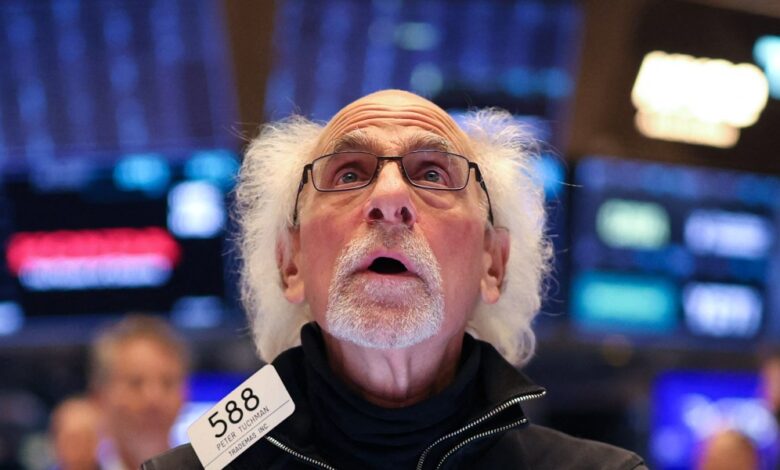Stocks slide deeper into the red after Fed chair’s ‘stagflation’ warning reignites tariff fears


- A poor day for stocks ended worse as tariff fears reentered the conversation, with major indexes sliding as tech companies report the first impacts from the U.S.’ trade war with China.
Stock markets started the day poorly and ended it worse as chipmakers reported revenue impacts from the China trade war and a hawkish speech from Federal Reserve Chair Jerome Powell reignited fears of tariffs’ stagflationary effects.
The S&P 500 lost 2.2%, led by a selloff in tech. The Dow lost 1.7% while the tech-heavy Nasdaq fell 3.1%.
Nvidia closed down 7% after the chipmaker revealed Donald Trump’s restrictions would cost the chipmaker $5.5 billion. The policy means the trillion-dollar company can no longer export a key chip to China—a market analysts estimate makes up 10% of its revenue. Rival Advanced Micro Devices sank 7% also after noting that those export limits could hit the chipmaker up to $800 million.
The existing uncertainty over trade policies was made starker by a speech from Federal Reserve Chair Jerome Powell Wednesday afternoon, who warned that tariffs would create a “challenging scenario” for the Fed of “higher inflation and slower growth,” a recipe for stagflation.
“There isn’t a modern experience of how to think about” the White House’s trade policy, Powell said in a speech to the Economic Club of Chicago.
Bond yields eased on Powell’s comments, indicating investors’ pessimism over the possibility of a U.S. recession. The yield on the 10-year Treasury note fell to 4.27% late in the day, from 4.35% in the morning and 4.48% last week, when bond markets experienced a trade-war-driven meltdown.
“Markets are struggling with a lot of uncertainty, and that means volatility,” Powell added.
The dollar gained ground against the euro Wednesday but has lost about 6% of its value in the past month as investors rethink the currency’s status as a safe haven. Gold hovered near its record high at $3,352 per troy ounce.
Earlier in the day, retail sales figures showed many consumers rushed to buy cars, electronics, and other big-ticket items last month before tariffs could hike prices further.
So far, the U.S. has a baseline tariff on most countries of 10%, with a 145% combined tariff on China. Goods from Canada and Mexico face tariffs of up to 25%, while imported autos, steel, and aluminum are taxed at that same rate. China retaliated last week by imposing a 125% tariff on U.S. goods. Tariffs are expected to drive consumer prices higher, and have contributed to plunging consumer sentiment for the fourth month in a row.
This story was originally featured on Fortune.com
https://fortune.com/img-assets/wp-content/uploads/2025/04/GettyImages-2209823481.jpg?resize=1200,600
2025-04-16 20:09:54





